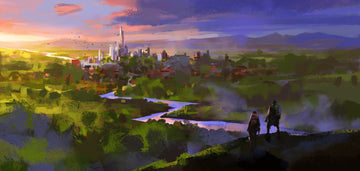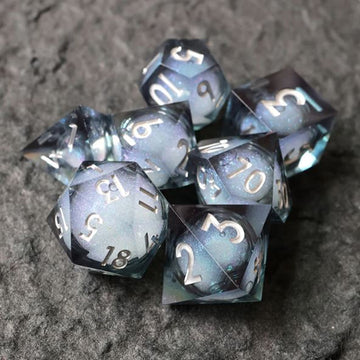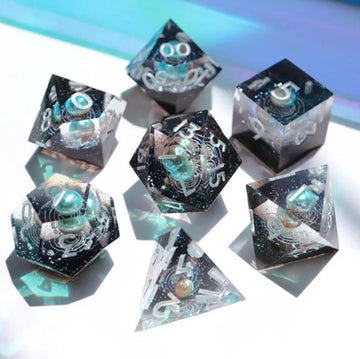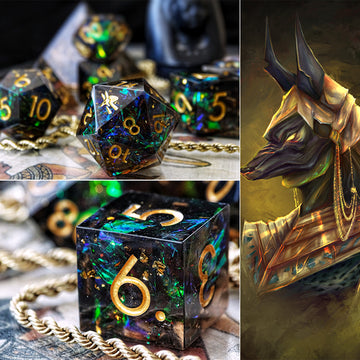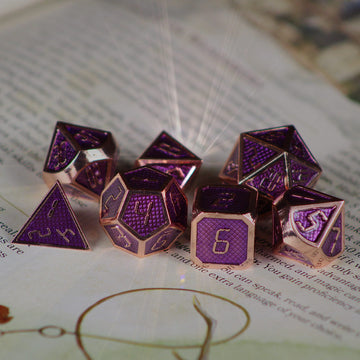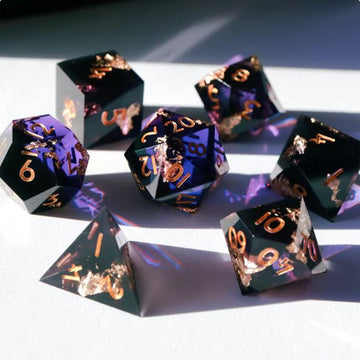Plus... How Exploration Became the Forgotten Pillar of D&D 5e and How to Make it Fun
By Riley Rath
Table of Contents
- Intro: We Have a DnD Exploration Problem...
- What is Exploration?
- Why DnD Exploration is the "Forgotten Pillar"
- DnD Exploration's Crucial Problem: Scenes/Encounters
- What is a Scene?
- Exploration's Unique Struggle With Scenes and Shared Storytelling
- How WOTC Makes Running Fun Exploration Nearly Impossible
- How to Make DnD Exploration More Fun
- Good Narration
- Mini Encounters
- Encourage Curiosity with Tempting Rewards
- Stoke Player Anxiety of the Unknown
- Conclusion: 5e Exploration Campaigns?
- Links to All Our Exploration Blog Posts
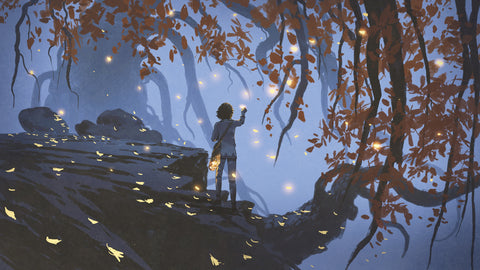
HOT TAKE:
Exploration is the most unique and enchanting part of Dungeons and Dragons.
Less-hot, more widely accepted take: DnD exploration is universally underrated, underused, and misunderstood.
And this begs the question... why?
Why is it that so many players rush through exploration like they have a train to catch? Why do DMs only make dnd exploration encounters when they don't want an absent player to miss "something important"? Why do most D&D 5e tables do everything they can to SKIP one of the core pillars of the game?
Because we don't know how to create, run, and play DnD exploration.
Our adventures suffer because they lack quality exploration encounters and/or don't leave enough space for players to explore. You might not think it is that big of a problem, but consider the following...
Think about aaaaaaaaaaaaaaaaall the Discord and Reddit forums complaining about Dungeons and Dragons fifth edition. They speak of how D&D 5e falls short of so many expectations, and they offer countless ways to make it better. They homebrew spells and classes and magic items until their keyboards wear and crack. They brainstorm ad nauseam about lore, combat strategy, table dynamics, and ways to role-play. We here at Awesome Dice do this too... and truth be told... the majority of these suggestions from the TTRPG community are GREAT and interesting and creative and I LOVE THEM!
But...
I propose that all these attempts are missing the point.
We are like French bakers experimenting with every possible cookie combination, desperately trying to find a way to improve it, when all along the best way to improve the cookie was to dip it in a cold glass of milk... just like God intended.
We are fruitlessly scratching an itch that actually requires a soothing salve.
If our D&D sessions are missing something fundamental, then no amount of new things and ideas and stuff are going to fill the gaping hole in the game. If the glory of Dungeons and Dragons is found in a balance of exploration, role-play, and combat... then the solution is to restore the Exploration Pillar's place in our D&D 5e campaigns.
And here is the good news...
DnD exploration CAN be a fun and engaging part of ANY adventure.
Here at Awesome dice, we spent 2023 (and will spend some of 2024) going through everything we need to make exploration AMAZING in our D&D 5e campaigns. This post covers DnD exploration as an idea, its problems, and why it is good that it is a necessary pillar of the game.
But we also went through/will go through the ways DnD exploration shows up in your campaigns: dungeons, travel, chases, survival, puzzles and traps... etc. You can find the links to those posts at the bottom of this post.
After all... the fifth edition has been out for darn near 9 years now... it's about time we started getting DnD exploration right!
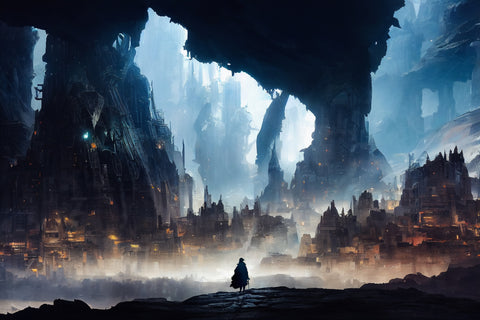
What is Exploration?
Let me first clarify something that is very, very important:
DnD EXPLORATION IS NOT THE SAME AS OVERLAND TRAVEL. DnD exploration includes many types of game play, one of which is travel. Exploration is the category; travel is a type within that category.
That is why definitions like "Discovering things while traveling across new, unknown areas" or "moving across space and getting information" are both bad definitions of exploration.
This is... without a doubt... the most common mistake people make regarding exploration. And since DnD travel is OFTEN (but not always... see our travel posts!) boring as hell, a lot of players would rather just not explore at all.
Here is the best definition of exploration I came up with:
Exploration is seeking, investigating, and/or wandering out of a desire to discover something.
Yup, that definition is "8-lane highway" broad. But if you don't believe me, Wikipedia also has good, broad definitions.
- "To examine or investigate something systematically."
- "To examine diagnostically."
- "To wander without any particular aim or purpose."
Mr. Wikipedia is right in demonstrating that exploration covers a lot of ground. It can be intentional or aimless, often (but not necessarily) involves physical movement, and is some form of seeking. But one way or another, when you explore, you discover something and move from the unknown to the known.
This... THIS... THIIIIIS... the sensation of DISCOVERY... is why real life humans LOVE exploration so damn much! Even when we know the risks... even when we are scared... we simply love discovering stuff. From the dawn of our species, we were programmed to make sure as little as possible was unknown. Sometimes we are driven by curiosity or riches... other times we are driven by fear and threat. But regardless of the motive, we are driven to explore and every fiber of our being is ECSTATIC when we discover something. We can't get enough of it!
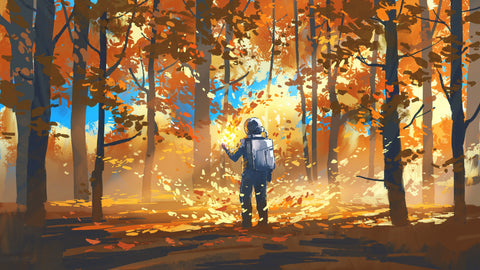
(For A LOT more on this subject, read our post "How Curiosity, Discovery, and Wonder Make Exploration Unique in D&D 5e")
This love of exploration trickles into our enjoyment of stories and games. We LIKE IT when we do not know the outcome ahead of time.
- Take Harry Potter... how LAME would it be if Harry knew that Snape was a double agent death eater and that Harry was, himself, a horcrux?
- Or Lord of the Rings... yeah, they knew they needed to destroy the ring all the way back in Rivendell. But how LAME would it be if they also knew A) the right route to take, B) every monster they would face, C) exactly how to beat them?
- Or a simple adventure like the opening of Indiana Jones: Raiders of the Lost Ark (which is basically a D&D dungeon, btw)... yeah, there isn't much story going on, but how LAME would it be if Indy knew the boulder would come rolling down on him as soon as he took the idol.
- Heck, even SPORTS, the least story driven and adventurous thing there is, is LAME when you already know what the final score will be!
It is an essential part of any story that wants to be fun and exciting.
At the heart of exploration is DISCOVERY... the unknown becomes known. It's why the open world nature of games like Breath of the Wild or Skyrim are appealing. If players knew everything and had nothing to discover, then you would be playing something that has more in common with a board game or a war game rather than tabletop role-playing and cooperative storytelling.
If humans are programmed to love exploration, then Dungeons and Dragons players are as well. Which is why Wizards of the Coast made it a foundational, essential PILLAR that holds up the whole game.
What is Exploration in D&D 5e?
5e Exploration is anytime players are wanting to discover something. It involves skill checks and player agency and is what keeps the story interesting and game play suspenseful. If they do not know something and want to know it, they go explore!

Why DnD Exploration is the "Forgotten Pillar"
When D&D 5e was released, some of the creators shared their "3 pillars of 5e" philosophy that guided their creative process. These, they believed, were the essence of all previous editions of Dungeons and Dragons. They were woven into the heart of fifth edition, both as an overall game and the design of "ideal" individual sessions.
The three pillars of D&D 5e are 1) Combat, 2) Social, and 3) Exploration.
Dungeons & Dragons has its roots in wargaming, so it is no surprise that "combat" is accepted as essential. The vast majority of the rules and mechanics in the Players Handbook deal with attack rolls and combat. And given that it is a role-playing game that you play with friends, it's pretty hard to avoid the "social" part. There is constant social interaction with players as well as with other player characters in the imaginary world you inhabit.
Both the combat and social pillars are obvious to even the most inexperienced of players. But exploration? It's not as noticeable and, as a consequence, is "forgotten." And there are three main reasons for this:
1) Most players don't even know when they are exploring!
Many of the skills, spells, and abilities in D&D 5e are all about exploration. Look again at my definition: "exploring is seeking, investigating, wandering... out of a desire to discover something." Notice that included the word "investigation"? Like, the investigation skill? When you make an investigation check, you are seeking out something and hoping to make a discovery. And once you realize that, then your perspective on exploration expands a great deal indeed, even beyond investigation checks:
- Every time you open a door to an unknown room in a dungeon...
- Or wander through a forbidden, magical forest...
- Or mill about a tavern, hoping to overhear some of the local gossip...
- Or try to figure out what attack will kill this strange monster...
- Or ask questions of a mysterious NPC...
...You are participating in the exploration pillar of D&D 5e!
Think about the Identify spell, which allows players to discover if an object is magical or not. Or the Ranger's Natural Explorer class ability, which allows them to easily navigate unknown favored terrain. Or the Historical Knowledge ability of the Archeologist background, which allows a character to understand the origins of ruins and dungeons. And most of the equipment is there NOT to help you in combat, but to enable your character to get to new places... and survive! They were designed with exploration in mind, but we easily overlook them!
But there is another reason these uses of DnD exploration are so easy to overlook...

2) Exploration is the "forgotten pillar" because it is in the background.
Exploration is hidden: it is taken for granted... it often exists in the background.
Consider how so many DMs spend hours and hours slaving over their world building. Sure, they like doing it, but do you think all that work is merely so you can have a cool place to fight? No way, Jose. Street Fighter and Tekken have cool places to fight... very little world building needed for that. And do you they do it just so that all the fun NPCs you encounter have a complex backstory? Nuh uh... though that is a fun by-product, that would be way too much work to be worth it.
DMs build a world so players can explore that world. And as the players explore the world, exploration also leads the entire party to new people and places: an interesting NPC or a new tavern or a giant's cave. Exploration is started by plot hooks and ends in new encounters that move the plot forward.
Sometimes this looks like an NPC describing the political turmoil in the upcoming kingdom. Or the players arriving at a sprawling city the DM built from the ground up. Or something as simple as the DM describing a sublime mountain vista the players stumble onto.
Simply put: DMs build a world so players can explore that world... our focus is on the world, not the exploring.
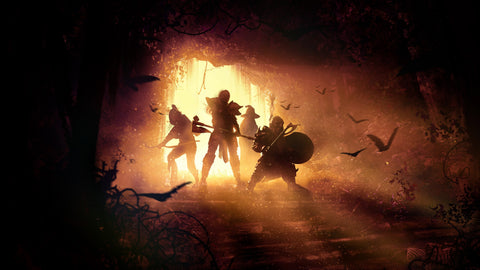
3) Exploration is the glue that holds all the pillars together.
Sometimes exploration is the third piece that turns D&D into more than the sum of its parts. And other times it is the vehicle in which combat and social encounters are delivered. Regardless, when it comes to the "standard" D&D adventure, exploration is an essential piece... a pillar which holds up the "world's greatest role-playing game."
- If combat and social encounters are bread and peanut butter... exploration is the jam.
- If combat and social encounters are cookies and milk... exploration is the glass.
- If combat and social encounters are wings and beer... exploration is carrots, celery, and ranch.
The quintessential example of this is the classic D&D dungeon. The whole point is for players to explore a dungeon... room by room... in order to discover some treasure. Along the way, they solve puzzles and answer riddles (exploration stuff!) as well as battle strange monsters (combat) and encounter strange NPCs (social).
Dnd exploration encounters fill the gaps between combat and social encounters.
But there is one other reason exploration is "forgotten"... why it is underused and misunderstood... and its right there in that statement... "Dnd exploration encounters."
This is the big kahuna of reasons. This is why DnD exploration falls so, so, so, so, so, so, so far behind the social and combat pillars. So much so that I have bolded, underlined, and italicized this paragraph... that way you KNOW I mean business.

DnD Exploration's Crucial Problem: Scenes/Encounters
In case you just jumped here from the table of contents, let me reiterate the point above:
The biggest problem with DnD exploration is its relationship with encounters/scenes.
In my highly academic research that was definitely not me reading the top 10 results on Google... I came across a lot of different definitions of a scene. And while tabletop role-playing games are a unique form a storytelling, in books and films the scene is THE way a story is told. An author may have characters and a plot, but only by putting those characters in scenes, and organizing those scenes into a chain of cause/effect events, can they be properly called a narrative.
Bottom line: no scenes = no stories. And the D&D equivalent of a scene would be the ENCOUNTER. A campaign is a series of sessions, and a session is a series of encounters.
Book/movie/play scene = D&D encounter.
However, an encounter on its own is not necessarily a scene. And a series of encounters is not necessarily a plot. That's because a scene is not just ACTION. It is VALUABLE action... change that moves the story along.
And there are LOTS of ways a scene or encounter can add value. You can develop a character, world build, introduce a theme, add tension and suspense, etc. No matter what, a scene accomplishes something for the sake of the overarching narrative... the story CHANGES in some way, shape, or form for the better.
Valuable book/movie scene = relevant D&D encounter.
For example, take the end of the Fellowship of the Ring:
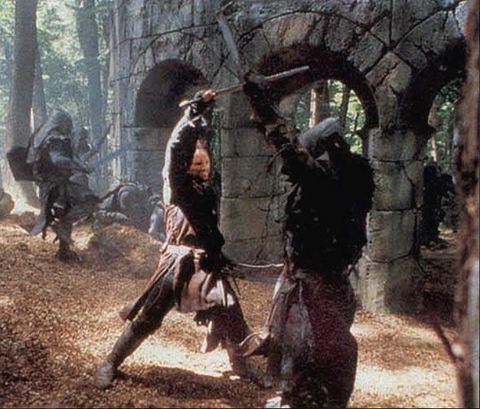
© Embracer Group
- No one cares of Frodo's sword changes from silver to blue... unless that means orcs are approaching and the tone shifts as the stakes are raised.
- No one cares that Merry and Pippin are hiding... unless it allows them to create a distraction for Frodo.
- No one cares that Boromir arrives... unless it is the conclusion of his redemptive arc.
- No one cares that Lurtz stays behind to finish off Boromir... unless it sets up a one-on-one battle with Aragorn.
- No one cares that Aragorn puts on some new wrist gauntlets... unless it represents his keeping a promise to Boromir and accepting his destiny to be king.
All of these elements comprise the Amon-Hen scene. They are not only there because they are visually or emotionally stunning, but ALSO because they show he audience a valuable change necessary for the story.
Small problem... D&D IS CRAZY RANDOM cHAoTiC NONSENSE!!!
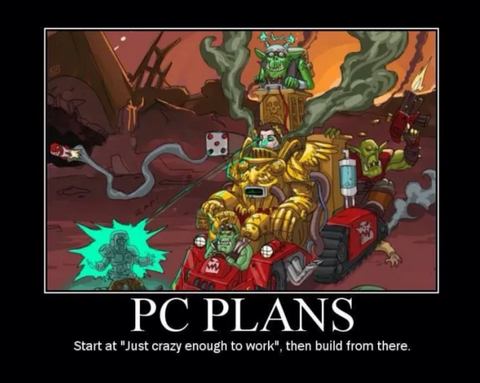
In Dungeons and Dragons, instead of an author, you have five tipsy lunatics improving their way to oblivion. Even the GM, who is the closest thing to a traditional author, only has a tiny fraction of the power to dictate how an encounter/scene goes. Everyone does their best to cobble together a story, but there are going to be lots of encounters that barely connect to the overall plot. No D&D "scene" will ever be as seamless as a book or movie... especially when it's a random encounter and random rolls!
Furthermore... D&D is NOT only a storytelling method... it is also a GAME! It has weird dice, expensive minis, and pages and pages of rules for resolving actions and using magic items. Player characters named "Sir Fart-mouth III" can be customized like Lego sets to deal 117 damage in a single hit.
D&D 5e is also a game, with different priorities than narratives.
D&D 5e is a hybrid... a unique blend of storytelling device and tabletop game. And because it's a fun game people play, not only a carefully crafted work of art, it isn't going to follow all the narrative "rules" of scenes/encounters. There are going to be a bunch of wasted, value-less encounters.
THAT SAID...
Combat and social encounters do naturally fall into scenic structures. A good scene is also a mini story in and of itself. It has a setting and action that takes place in that setting over a period of time. It has built-in structure, complete with a beginning, middle, and end. There is conflict that is presented or developed and resolved in a way that leads to the next scene.
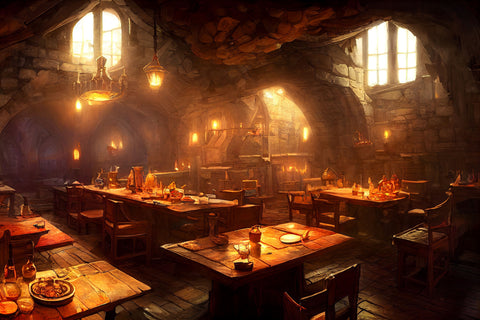
Here are some examples of how combat and social encounters do exactly that:
- A combat encounter with a hill giant, though completely unplanned, inevitably will fall into a structure. Players encounter the hill giant's lair and eventually meet the hill giant. Tension and pacing escalates as they fight, reaching the climax with the killing blow. Finally, each party member heals and loots.
- A social encounter in a tavern can be a scene between an exhausted party and a group of drunk gang members. The players can enter the setting, relieved to have survived the hill giant. They can they draw the attention of the gang and choose how they want to navigate that conflict.
In summary, combat and social encounters not only have well-defined rules and are understood by the D&D community, but they also naturally form scenes. Because of that, they have an easy time balancing the tension between storytelling and game play. Is it any surprise people find the combat and social pillars tons of fun?!?!?
DnD Exploration's Unique Struggle With Scenes and Storytelling
Exploration, on the other hand, is different. Common examples of "exploration encounters" include searching a library for an old tome, charting a dark forest for a magical spring, or trekking across hostile badlands. And while those are actions... valuable actions that change the story... NONE ARE COMPLETE SCENES.
- The setting constantly changes without additional impact.
- The passage of time is not felt by the players.
- There is no 3-part structure... no rising tension... at best, just the presentation of a problem and the players solving that problem.
Because, usually, when players are exploring, they aren't experiencing an encounter... they are just transitioning between encounters.
When exploring, players are not in a scene, and THAT is the problem:
- Exploration = no encounters
- No encounters = no scenes
- No scenes = no story
- No story = exploration cannot participate in "shared storytelling."
As stated above, D&D is not JUST a game... it is also cooperative storytelling. That is what sets an RPG apart from other types of games. And if exploration cannot participate in the storytelling part of D&D 5e, then it is not going to resonate with the majority of the D&D 5e community who love the storytelling element.
Translation: DnD exploration struggles to participate in 50% of what makes D&D special and fun!!!
Exploration has a hard time really, truly, fully being a part of D&D like the combat and social pillars. Exploration only fits with half of D&D 5e, and as a result players and Dungeon Master's alike don't know what to do with it. As a result... exploration is forgotten... neglected... ignored.
(For further descriptions of scenes, read our post "Encounters and Scenes: Why the Exploration Pillar and D&D 5e Don't Get Along").
And if that wasn't bad enough... WOTC made it even worse by providing almost no guidance for DMs and players.
So, in summary...
Why is DnD exploration called the forgotten pillar?
Because in 5e, exploration is not only hidden in the background, but is often blended with the other pillars. Furthermore, it struggles with distinct and fun encounters/scenes, which are the bedrock of any story-driven TTRPG.
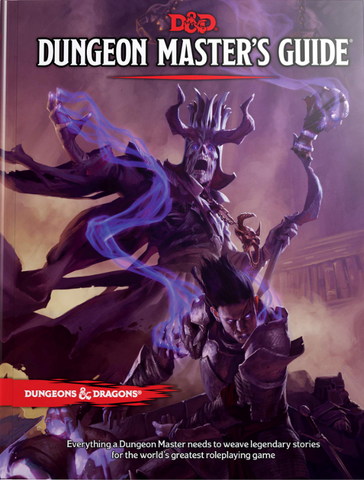
© Wizards of the Coast
How WOTC Makes Running Fun 5e Exploration Nearly Impossible
Exploration is an exciting, expected, and essential pillar of D&D... but it's forgotten. It's forgotten because we don't understand it, it's hidden in the background, and it struggles with encounters or scenes.
That would imply that if we just opened our minds and understood encounters better, we could apply the rules as written and immediately experienced exploration's amazing impact on our session... right?
Well... no.
Turns out, it's not all our fault as players and DMs for dismissing exploration... the creators of D&D kinda did it too.
The way Wizards of the Coast has/does/teaches D&D 5e is... kinda dumb.

© Netflix
In fact, it's really dumb.
here are three examples/reasons why:
1. WOTC assumed running RPG exploration was INTUITIVE (it's not).
I suspect they assumed it was just like role-playing because, just like pretending to be someone else, we all have explored in one way or another. We have all wandered off the path in some woods or gotten lost in a new neighborhood at some point in our lives. And whether we can put words to it or not, we all know what it feels like to explore and discover something. And because of that, WOTC assumed we would know how to explore while playing D&D 5e.
Oopsie poopsie... that's not how it's worked out.
DnD exploration sits in-between the social and combat pillars, drawing from both. The social pillar has one or two bumps, but it's mostly A) hanging out with friends and B) acting as your character. Combat, on the other hand, is foreign to 99% of players, so the game has hundreds of rules to teach us how to play it. For what is familiar, 5e offers very few rules. For what is unfamiliar, it provides lots of rules.
The exploration pillar sits in the middle, and therefore NEEDS rules.
Exploration is a little intuitive... we have all explored many times in our lives! But not totally intuitive, especially when it comes to integrating it into gameplay. it needs more rules than the social pillar but less than the combat pillar.
So where do we find the 5e exploration rules?
2. WOTC put the exploration rules all over the f*ck#ng place.
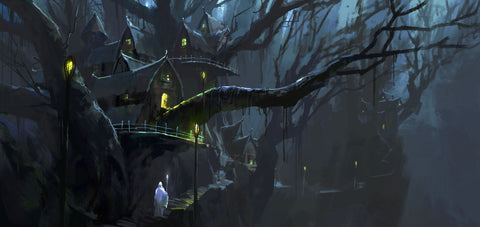
This part blows my mind... it's as though they organized the exploration pillar in the most confusing, convoluted way. A way guaranteed to turn it into something neglected and forgotten.
For example... do you want your players to do some wilderness travel, explore a forest, and look for a dungeon? Ya know... a SUPER common experience? Well, WOTC has blessed you with 4 whole pages of a 320 page book (1.3%) in the Dungeon Master's Guide to help you make that fun.
And that's just the start of it...
- Survival? Well, you're going to have to keep reading until pages 267 of the DMG. But levels of exhaustion are buried in the appendix of the PHB (291), even though survival is sorta kinda on page 185. Don't worry, even they knew one page for survival isn't enough... which is why they blessed you with one more page in the adventure module Tomb of Annihilation (page 37).
- Travel? Tomb of Annihilation also gave us two whole pages on travel (36 – 37), adding to the already whopping one page NOT in the DMG, but this time in the Player's Handbook (181 – 182).
- Random encounter tables? Actually, this is pretty good... over 20 pages... but it's in Xanathar's Guide to Everything, not the core 3 books. And for all those strange creatures and interesting monster stat blocks, you will need the 5e Monster Manual.
- Traps and puzzles? The DMG has pages 120 – 124 for traps, but nothing specifically on puzzles. Thankfully, traps were expanded in Xanathar's, pages 113 – 123... and puzzles were added in Tasha's Cauldron of Everything, pages 171 – 189.
- World building? DMG 99 – 120, published in 2014. But this is a game full of wonder... where are the areas of magic? Um... six years later... Tasha's Cauldron of Everything, 150 – 170.
I could not have devised a more user-unfriendly system for beginners, DMs and GMs if I tried.
D&D 5e DESPERATELY needs all the exploration rules in a single, easy-to-reference chapter or book. I could go on and on tearing WOTC a new one... but my voice is weak from being up on this soap box for so long. And all of my comments on how few pages there are leads to my third point:
3. WOTC did not make enough exploration rules.
On one hand, I commend WOTC in their effort to make D&D 5e simple. They were smart to flavor storytelling and distance themselves from stat sheets and math problems. By removing the glut of rules from previous editions, they have opened the game to an entirely new generation of players. And as a result, it has exploded in popularity.
On the other hand... they went too far. As stated above, exploration sits between the social and combat pillars. The social pillar has almost no rules (PHB 185 – 168 and DMG 224 – 246) and just relies on ability checks. And the combat pillar has more rules than I can count across multiple chapters. But exploration only has slightly more rules and strategy guidance than social... and that is not enough.
The DnD exploration pillar needs more rules.
If the social pillar is the "baby bear" and the combat pillar is the "papa bear," then the exploration pillar is the "momma bear." It needs to have a "medium" amount of rules specific to it. For it to be as enchanting as it is supposed to be, the exploration pillar needs rules that distinguish it from the other pillars and helps its game play thrive. And until it has more structure... more rules... more "doctrine"... it will remain the forgotten pillar.
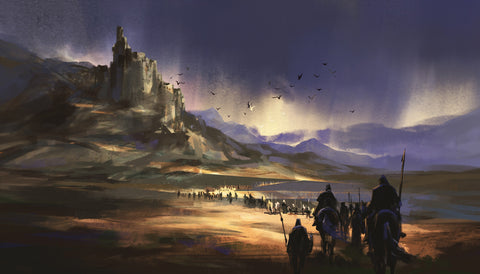
How to Make DnD Exploration More Fun
Our 2023 – 2024 quest at Awesome Dice is to provide all the rules and guidance necessary to make excellent DnD exploration encounters. The links at the end of this post will guide you through travel, heists, chases, puzzles... everything exploration!
Don't Over-Narrate... Let Your Player's Explore!
This one is simple, but hard to master.
While it is important to make sure your players know what is going on around them, too much narration can be boring. Long story short, too much narration takes players out of the story, involves zero player agency, and usually is not emotionally engaging.
You want to keep players interested, and replacing some exposition with an experience can go a long way to capture their attention. You know the "show, don't tell" rule? Well, for D&D it's "whenever possible, role-play, don't narrate/roll a die."

Compose Exploration Encounters from a Series of "Mini Encounters"
Just like scenes are mini-stories in and of themselves... use min-encounters to comprise an overall exploration encounter.
Let's say your players need to get into a castle dungeon and are exploring the castle in order to discover the key to the dungeon. As the DM, you should establish the setting (castle) and give players a single, simple goal (dungeon key). Keep the DC on the lower side... you want to REWARD their attempts to explore.
Then, you give them free reign to explore the area, discovering clues that reveal unknown things about the castle as they search for the key to the dungeon door. They will split up and investigate rooms, talk to NPCs, and perform some skill checks or saving throws. Each of these should be quick "mini encounters," taking no more than a few minutes.
While unsatisfying on their own, when woven together into a single exploration encounter called "exploring the castle," they become satisfying and complete! Allow tension to rise and fall, slowly reveal important information, and allow the encounter to climax with the discovery/failure, all this based entirely on the actions of the players.
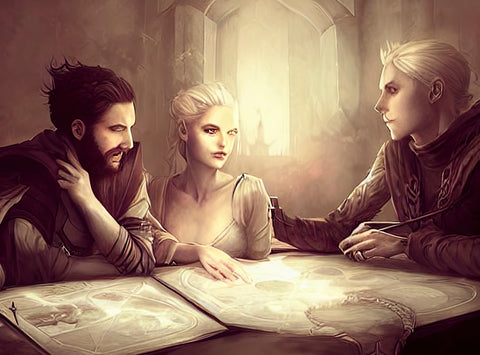
Use Potential Rewards to Stir Curiosity in Your Players
Tell me if you've heard this one: the Dungeon Master reveals a mission so intriguing, so rewarding for adventurers, that they players can't help but find out more. Players slowly learn how dangerous it is, but are too curious to say no. Sound familar?
Yep, because it's just a classic "adventure hook" which motivates players to explore by tempting their curiosity.
The trick is to make the hook so damn good that the players' known risks pale in comparison to the reward. But you have to thread the needle: if the reward is too far off, they will lose interest... encourage them and give them clues so it always feels like it is juuuuust out of reach.
On top of that... honor their questions! The better the answers you give to their questions, the more convinced they are that there really IS a detailed world out there for them to discover.

Use Fear of the Unknown to Create Anxiety in Your Players
On the other hand... rather than tempting players, you can threaten them with an unknown fear. The key is that it is unknown, because their mind fills in the blank with all sorts of terrible monsters. Their instincts will kick in and compel them to find ways to resolve that fear. Offer conflicting information, sowing seeds of doubt, or bringing the uncertainty to the forefront of their minds.
The "fear" can be anything from a deadly dragon to potential exhaustion!
The key here is to make sure the players KNOW that they DO NOT KNOW something. You can do this by offering conflicting information. Then, you want to make them FEAR what they do not know. Imply some dreadful, potential consequence that they need to find a defense against. However, be careful not to make it too scary or they will just choose to run away and not explore. The best situation is when they HAVE to explore something due to plot/character reasons, because then there is only one way to escape the threat.
Conclusion: 5e Exploration Campaigns?
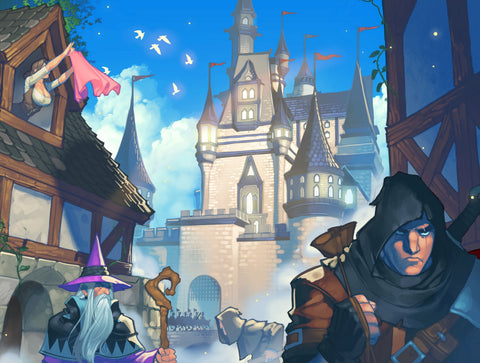
I know... this has been a LONG post. But the exploration pillar deserves it... our campaigns deserve it. But let me summarize everything as simply as I possibly can:
- Definition: "Exploration is seeking, investigating, wandering... out of a desire to discover something."
- Humans love exploring, and it is an exciting part of stories.
- But despite being important to TTRPGs, D&D 5e struggles with it.
- People don't intuitively know how to play it.
- DnD exploration doesn't lend itself to scenes/encounters.
- There aren't enough rules to make it special and functional.
The conclusion: for DnD exploration to cease to be the forgotten pillar, D&D 5e needs to 1) identify distinct exploration encounters and 2) have unique rules for those encounters.
That is what all the 2023 – 2024 posts are about. They explain the 5e rules as written, offer a good idea or two to spark your creativity, and expand with homebrew mechanics designed to make exploration FUN.
Links to Our Other DnD Exploration Blog Posts
Below are our exploration-specific topics, but the blogs cover everything from proficiency to dungeon design to NPC stuff. Sign up here to get email notifications when we post a new one. And, as always, browse our selection of dnd dice!
- How Curiosity, Discovery, and Wonder Make Exploration Unique in D&D 5e
- Encounters and Scenes: Why the Exploration Pillar and D&D 5e Don't Get Along
- How to Perfectly Plan a D&D Heist
- How to Run D&D 5e Stealth Encounters
- The Ultimate Guide to D&D Travel
- Understanding D&D Visibility Rules
- DnD Fast Travel "Skill Challenge" Method
- "Over the Top": A D&D 5e Story and Example of Amazing Exploration
- How to Run a Hex Crawl in Your TTRPG and DnD 5e Campaigns
Coming Soon in 2024!
- Mysteries
- Traps
- Puzzles
- And More!
Riley Rath

Riley is a freelance copywriter, content writer, and marketer based out of Spokane, WA. He is thankful to have the opportunity to combine his passion for imaginative role-playing to help FLGS, tabletop, board game, and D&D related businesses communicate their distinct value to players everywhere. When not playing or writing about board games or DnD, he is busy hiking, cooking, and gardening... very hobbit-like for a 6'4" dude.
Use this link if you are interested in his TTRPG and board game marketing assistance!

